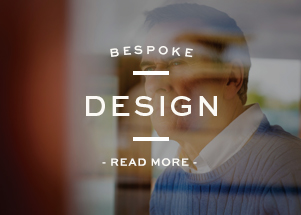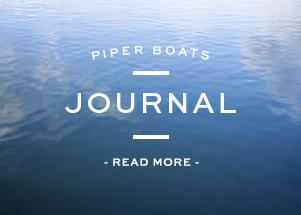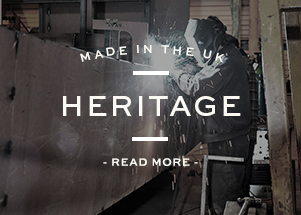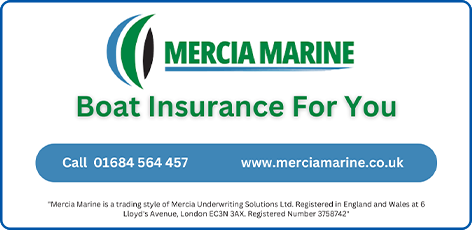People travel for lots of reasons – to explore the unknown, to visit interesting places, or just for the sheer joy of it. On the Mittelland Canal most people are heading for Berlin, and many of them seem to be missing out on the joy. But if you were offered a cruising ground of 300 km, through rolling countryside but with only two locks, with ample opportunities for walking and cycling, with picturesque and historic towns and cities within reach, would you just rush through it? The Mittelland is the main west-to-east route for inland shipping, and like any ‘autobahn’ is busy with commercial ‘vehicles’, including gas and chemical tankers and tugs pushing huge barge-loads of containers, plus many pleasure craft. There’s room for everyone (it was widened after the reunification of Germany), and the commercial skippers are generally courteous. And like any other autobahn, it doesn’t go into the cities: you have to go and find them.
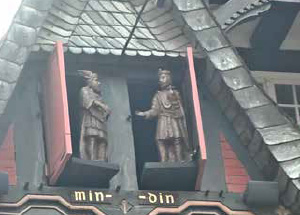 Tony and I have spent a total of 45 days on the Mittelland on our barge, Bertillac, and we still haven’t got to Berlin. On our first visit we left it at Minden, locking down into the Weser to go to Bremen, and returning to the Netherlands via the Kusten canal. The second time we turned off along the Elbe-Seitel canal to Lubeck and Hamburg, coming back the way we went. Long travelling days aren’t our dog Shoga’s idea of a good time, nor ours. We prefer to cruise for two or three hours then stop and explore, and there are plenty of stops and lots to see on or near the Mittelland. At nearly 17 metres Bertillac is too big for some of the marinas, and others have few ‘big’ spaces (best to phone ahead – there’ll be someone who speaks English), but there are frequent free, unserviced bankside moorings: look for the yellow-painted stretch at the end of a commercials’ mooring. The DBA mooring guide and the widely available Vom Rhein zur Nord- und Ostsee guide (in German, but there’s always Google Translate) will help you find them.
Tony and I have spent a total of 45 days on the Mittelland on our barge, Bertillac, and we still haven’t got to Berlin. On our first visit we left it at Minden, locking down into the Weser to go to Bremen, and returning to the Netherlands via the Kusten canal. The second time we turned off along the Elbe-Seitel canal to Lubeck and Hamburg, coming back the way we went. Long travelling days aren’t our dog Shoga’s idea of a good time, nor ours. We prefer to cruise for two or three hours then stop and explore, and there are plenty of stops and lots to see on or near the Mittelland. At nearly 17 metres Bertillac is too big for some of the marinas, and others have few ‘big’ spaces (best to phone ahead – there’ll be someone who speaks English), but there are frequent free, unserviced bankside moorings: look for the yellow-painted stretch at the end of a commercials’ mooring. The DBA mooring guide and the widely available Vom Rhein zur Nord- und Ostsee guide (in German, but there’s always Google Translate) will help you find them.
You reach the Mittelland via the Dortmund-Ems. Coming from the north, this can be frustrating: the locks aren’t that user-friendly and you may have to wait until there’s a suitable commercial to share with. But once you get onto the Mittelland you’ll find the first mooring in the Alte Fahrt. The entrance, past a scrap yard, isn’t inviting, but leads to a spacious rural mooring with pleasant walks: wild flowers, birds, dragon- and butterflies, buzzards circling overhead, and small birds in the bushes. A filling station and shops are within walking distance. A perfect place to chill out for a day – or maybe a few days.
About 30 kilometres further on you can turn off onto a side canal (Stichkanal) which goes to Osnabrück, but as the marina’s well outside the city you’d need a bike, or you can walk to the station at Halen. We moored on the Mittelland and took a 15-minute train ride from Achmer (the grass-covered station platform was a surprise). People of our vintage will remember Osnabrück from Two Way Family Favourites, but of course it has a much longer history. The bishopric was founded by Charlemagne, and after the Reformation had alternating Catholic and Lutheran bishops, which seems sensible and humane. ‘Don’t mention the War’, but reminders of World War II are everywhere in this part of Germany. The city was heavily bombed, and there’s some concrete infill from the desperate post-war days when any building was better than none, but some of the old fortifications survived and many old buildings have been restored: the cathedral, the old town hall, and some richly carved and painted half-timbered houses, are particularly fine.
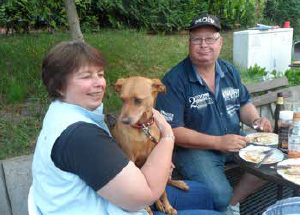 Back on the Mittelland, nearby Bramsche has a huge supermarket and a DIY store a short walk from the mooring. For centuries the town produced fabrics, including, we were told, scarlet cloth for British army uniforms. The Tuchmacher museum has the old machinery (we tagged on to a party having a guided tour and saw it in action), some even older machines which it rather smugly says were used in Eastern Germany for far longer, and samples of synthetic fabrics with explanations of their manufacture, qualities and uses.
Back on the Mittelland, nearby Bramsche has a huge supermarket and a DIY store a short walk from the mooring. For centuries the town produced fabrics, including, we were told, scarlet cloth for British army uniforms. The Tuchmacher museum has the old machinery (we tagged on to a party having a guided tour and saw it in action), some even older machines which it rather smugly says were used in Eastern Germany for far longer, and samples of synthetic fabrics with explanations of their manufacture, qualities and uses.
Our next stop was Bad Essen: if you can’t get into the marina there’s a mooring on the opposite bank. The water tap in the marina, as we’ve found elsewhere in Germany, was labelled Kein Trinkwasser (not drinking water), and we saw people staggering back with trolleyloads of bottled water, but the harbour master assured us that the water was the same as the town drinks, but they couldn’t guarantee the state of the pipes to the quay: just run the tap to flush them. We filled up with no ill effects – but then our freshwater tank holds a cocktail of nearly thirteen years’ boating: there may even be homeopathic amounts of Thames Valley water.
The marina is next to a small shopping centre with a supermarket and a ‘sells everything’ store (in case you didn’t find what you wanted at Bramsche). Beyond the shops is a small, pleasant town, with black and white half-timbered buildings: a different style from those in Osnabruck. Most have large doorways, presumably once the entrance for carts and carriages but now filled in, with the owner’s name or a Bible verse carved or painted above the arch. The Tourist Information has a town walk leaflet in English which says that the ashes of the local bigwig family were deposited in a mausoleum by the church, described as their ‘ashtray’, and that the town is famous for Bad food. Past the main street you come to the warm springs which gave the town its name and account for its numerous clinics and ‘wellness’ establishments. In the park you can sit in a twig-covered ‘donut’ and inhale sulphurous, but not unpleasant, steam before going for a healthy walk in the wooded hills above the town: an ice cream sundae will soon replace any burned-off calories.
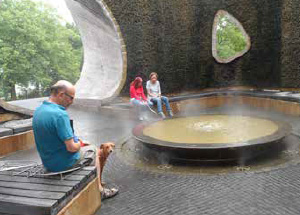 After three nights in Bad Esssen we went on to Minden. An official pleasure boat mooring is opposite the rather beautiful old lock: a notice board next to it explains its unusual features. It’s now too small for the traffic and has been replaced by a much larger one. This, the twin aqueducts across the Weser valley and the even longer ones at Magdeburg, which we haven’t seen yet, must surely earn the Mittelland a place in Every Child’s Book of Engineering Marvels (which doesn’t exist, but should). Near the lock a small pyramid commemorates Leo Sympher, who designed the Mittelland and related water-management infrastructure but didn’t live to see all of it built.
After three nights in Bad Esssen we went on to Minden. An official pleasure boat mooring is opposite the rather beautiful old lock: a notice board next to it explains its unusual features. It’s now too small for the traffic and has been replaced by a much larger one. This, the twin aqueducts across the Weser valley and the even longer ones at Magdeburg, which we haven’t seen yet, must surely earn the Mittelland a place in Every Child’s Book of Engineering Marvels (which doesn’t exist, but should). Near the lock a small pyramid commemorates Leo Sympher, who designed the Mittelland and related water-management infrastructure but didn’t live to see all of it built.
On our first two stops at Minden we just stayed overnight and walked the dog in the meadow below the aqueducts. The third time we thought we really ought to visit the city – about a kilometre away along a road lined with fine old houses, the older ones with decorated facades, or along the Weser if the water level permits. There’s a lot of industry around Minden, but the centre is peaceful. Parts of the city were rebuilt after the War and some old half-timbered houses were lost, which they now regret: a few survivors on the banks of the Weser are now a museum. There is also the Schmiedingsche Haus in the main square, built in the early 20th century in a much older style with ornamental brickwork between the timbers. A frieze above the ground floor windows depicts historic events, including a visit by a Zeppelin. Twice a day a panel on a higher floor opens and two small statues emerge: they represent Charlemagne and Widukind, the last Saxon king, with the inscription Min-Din. The story goes that after Charlemagne’s victory, Widukind said Diese Burge soll nun min end din sin (This town shall now be mine and thine), and min end sin eventually became Minden. It’s a nice tale, and may even be true. The 11th century Dom has been rebuilt more or less as it was: the magnificent gold altarpiece is a copy of a copy – the original is in a museum in Berlin, the first copy didn’t survive.
After Minden we moored outside Haste and walked through the woods and along the road to the ‘town’. There wasn’t much there (the station, a café and one or two shops), and the huge and hungry mosquitoes in the woods decided us to move on to Hannover in the morning.
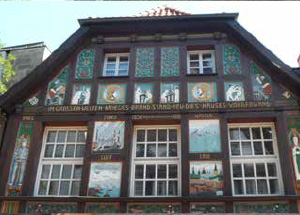 Hannover is worth at least a few days’ stay. The marina has all the usual facilities, a warm, clubby atmosphere, friendly staff, a restaurant on an old boat, and sells GTL. Two bus routes to the city centre start close by. One Tagesgruppenticket gives up to five people a day’s travel for about the cost of a one person’s return fare, which is handy because the supermarkets are quite a step but on one of the routes. The main sights in the city are linked by the Red Thread, a line painted on the pavement, and you can get an explanatory booklet in English from the Tourist Information Office. The Neues Rathaus (new town hall) has models of the town at various times in its history, and you can go up into the dome: the lift climbs at a 17o angle and is one of the city’s attractions, but they don’t tell you about the fifty-odd stairs to get to it and to the viewing platform. A coat of arms nearby, with familiar lion and unicorn supporters, are a reminder that George I of Great Britain was born here (and would never have left, if it had been up to him: his mother accepted the throne but didn’t live to occupy it). Along the River Leine are colourful statues by Niki de Sainte Phalle – you’ll know them when you see them. Lesser known are the art nouveau apartment blocks in the elegant but cosy Lister district (a short bus ride, or a longish walk, from the marina), and the nearby Eilenreide Forest in case you don’t feel you’ve walked far enough.
Hannover is worth at least a few days’ stay. The marina has all the usual facilities, a warm, clubby atmosphere, friendly staff, a restaurant on an old boat, and sells GTL. Two bus routes to the city centre start close by. One Tagesgruppenticket gives up to five people a day’s travel for about the cost of a one person’s return fare, which is handy because the supermarkets are quite a step but on one of the routes. The main sights in the city are linked by the Red Thread, a line painted on the pavement, and you can get an explanatory booklet in English from the Tourist Information Office. The Neues Rathaus (new town hall) has models of the town at various times in its history, and you can go up into the dome: the lift climbs at a 17o angle and is one of the city’s attractions, but they don’t tell you about the fifty-odd stairs to get to it and to the viewing platform. A coat of arms nearby, with familiar lion and unicorn supporters, are a reminder that George I of Great Britain was born here (and would never have left, if it had been up to him: his mother accepted the throne but didn’t live to occupy it). Along the River Leine are colourful statues by Niki de Sainte Phalle – you’ll know them when you see them. Lesser known are the art nouveau apartment blocks in the elegant but cosy Lister district (a short bus ride, or a longish walk, from the marina), and the nearby Eilenreide Forest in case you don’t feel you’ve walked far enough.
We ended up staying in Hannover for longer than planned. We left Shoga on the boat while we went sight-seeing, and she got through an impossibly small window and came to look for us. Not knowing the area, and with only basic German, we were at a loss: we searched locally, made and hung up posters, and I phoned the animal shelter and the police, finding that their English was worse than my German and we couldn’t communicate. After that it was rather taken out of our hands: the harbour master phoned them for us, he and the harbour staff went out after work to look for her (she was already miles away), and another skipper, Martin, told us about Tasso, a free find-anything service, who gave us advice, better posters, and said they could find her ‘anywhere in the world’. Martin also sent Shoga’s picture and details to a Facebook group that looks out for missing pets: the reported sightings were monitored and passed on to us. Shoga was seen in suburbs on opposite sides of the city, on the railway line (!), and in the centre. She was travelling fast, and wouldn’t let anyone near her. It seemed hopeless, even with what seemed like the half the population of Hannover searching. We missed her, feared for her safety, and felt guilty: our previous dogs had been unclaimed strays, but Shoga was entrusted to us by someone who loved her, and we’d lost her. After three days, when we’d been out all day searching and were ready for bed, Tony heard her crying: she’d found her way to the one place where she could see Bertillac through the fence. Tony ran to the gate to let her in while I put out food and water and phoned Martin. She ate, drank, licked both of us briefly, lay down in her basket and fell asleep while washing her paws: one of her pads was worn through. We went to tell the harbour master first thing in the morning, but the police, animal shelter, and the Facebook group had already been told. We stayed a few days longer to rest, and several local people approached us near the marina, asking if this was Shoga, one woman tearfully repeating Got sei dank (God be thanked). A young couple told us how they’d followed her for over an hour, reporting her location, before she evaded them. A woman gave us a piece of aloe vera to rub on her paw. Everyone was happy for us, and at the weekend Shoga was guest of honour at a barbecue arranged by the boaters. We came away with happy memories of so much kindness from complete strangers.
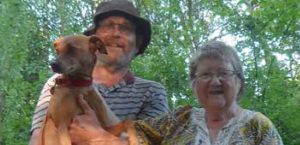 We visited Hannover again on our way back along the Mittelland. We can’t tell you everything that’s there: the Herrenhausen Gardens, State Museum, Sprengel Museum (modern art), and the zoo don’t allow dogs, and we didn’t feel we could leave Shoga behind. We did take her to the Machsee Lake (walk westwards along the towpath to the next bridge and take the tram), and had a pleasant time watching the sight-seeing boats, dinghies and pedalos, some shaped like Volkswagens. Some muscular bronze statues nearby are relics of Nazi art. Apparently there used to be a tower commemorating Bismarck: it became a scene of Nazi book-burnings and was pulled down by students from the technical university (now that’s what you call a rag week!) At the town end of the lake there are restaurants, beer gardens, and a memorial garden, the graveyard of hundreds of slave workers massacred by the Nazis two days before the Americans arrived. We found we’d missed an outdoor performance of Don Giovanni the night before.
We visited Hannover again on our way back along the Mittelland. We can’t tell you everything that’s there: the Herrenhausen Gardens, State Museum, Sprengel Museum (modern art), and the zoo don’t allow dogs, and we didn’t feel we could leave Shoga behind. We did take her to the Machsee Lake (walk westwards along the towpath to the next bridge and take the tram), and had a pleasant time watching the sight-seeing boats, dinghies and pedalos, some shaped like Volkswagens. Some muscular bronze statues nearby are relics of Nazi art. Apparently there used to be a tower commemorating Bismarck: it became a scene of Nazi book-burnings and was pulled down by students from the technical university (now that’s what you call a rag week!) At the town end of the lake there are restaurants, beer gardens, and a memorial garden, the graveyard of hundreds of slave workers massacred by the Nazis two days before the Americans arrived. We found we’d missed an outdoor performance of Don Giovanni the night before.
The day after the barbecue we moved on to Sehnde, which has a ‘mountain’ (a spoil heap from lime workings). We booked for two nights which pleased the harbour master, who was fed up with boats just passing through: we stopped again on the way back. We found more woodland walks (without mosquitoes), an Evangelical Lutheran church with the pulpit above the altar and a large ‘nail’ outside, one of a series representing the nails Martin Luther used to attached his 95 Theses to the church door in Wittemburg. The Tourist Information suggested we cycle to the tram museum at Wittingen: we think it’s actually a light railway. There are good shops and, of course, an ice cream parlour: my sundae was so tall I had to put on my lap to reach the top, and included Schnapps in a small chocolate cup. We thought of taking the Stichkanal or the train to Hildesheim, which is supposed to be very attractive and to boast two UNESCO World Heritage Sites, but for various reasons we decided to push on.
Our next stop was just before the Stichkanal to Salzgitter. They don’t let pleasure boats through the lock: you can probably walk or cycle there along the towpath, but it’s an industrial town and we didn’t. The mooring doesn’t look anything to write home about: about a kilometre of a drab bank with rubbish bays full of detritus (we found some used containers and Tony changed the oil on the main engine). There’s a smart-looking marina on the other side if you don’t fancy the bank. But walk back to the bridge and you’ll find views across farmland, with hare and deer in the fields. This stretch of the canal is fenced: there are gates, with notices telling you to be sure and shut them so that the wild creatures don’t fall in the canal and drown. In the evenings a mallard duck brought her babies to swim off the launching ramp behind us, a group of ducks came for a communal bath and preen, and at least two kinds of bat hunted above us at dusk. In the mornings we woke to the best dawn chorus ever. The Mittelland is rich in birdlife: we saw nearly fifty different species, including black redstart, red-backed shrike, red kites, yellowhammer (we heard the distinctive ‘little-bit-of-bread-and-no-cheeeeese’ for days before actually seeing one), and, according to our field guide, a short-toed eagle – we couldn’t see its toes.
We crossed the bridges over the Mittelland and the Stichkanal, and walked to Dortfeld, an old farming village. We were already familiar with the colourful plaques of shooting clubs on the houses, as we’d seen many in this area, but this was the first time we’d seen ones depicting breakdancing and motor racing. From here, or from Wendeburg, about a kilometre from the mooring on the north side, you can get a bus to Braunschweig (Brunswick). We thought we’d do that the next day, but a boater on the mooring advised us to get the tram from about 10 kilometres further on. We moored in a winding hole, with high banks, opposite a water authority harbour with colourful buoys, walked back to the second bridge, and found the tram a few yards away on the south side.
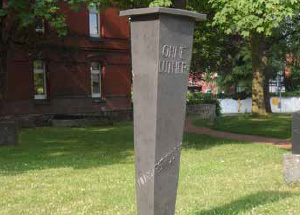 The tram took us right into the centre, opposite the Schloss, which is now a museum. Braunschweig was an important and gracious city, and is still an important one, famous for its technical college and for scientific research. There’s not as much to see as in Hannover, but it’s worth a day trip. There are some fine old buildings, although many are post-war restorations. The city was bombed for two nights, and burned for more than two days afterwards: much of the mediaeval town was destroyed and the restorations have been controversial, some people wanting everything back the way it was, others wanting to modernise. The result is a mixture, with a shopping mall in the midst of ‘old’ buildings. In the Burgplatz square stands a replica of the Brunswick Lion (the original’s in the museum), the symbol of the 12th century Duke of Saxony, Henry the Lion, who eventually fell out with Barbarossa and had to leave the country. This was just one episode in Braunschweig’s history of turbulent, sometimes riotous, government: several later rulers also had to leave suddenly. At one point the authorities were very right wing, granting Hitler German citizenship so he could stand for election – we all know the rest.
The tram took us right into the centre, opposite the Schloss, which is now a museum. Braunschweig was an important and gracious city, and is still an important one, famous for its technical college and for scientific research. There’s not as much to see as in Hannover, but it’s worth a day trip. There are some fine old buildings, although many are post-war restorations. The city was bombed for two nights, and burned for more than two days afterwards: much of the mediaeval town was destroyed and the restorations have been controversial, some people wanting everything back the way it was, others wanting to modernise. The result is a mixture, with a shopping mall in the midst of ‘old’ buildings. In the Burgplatz square stands a replica of the Brunswick Lion (the original’s in the museum), the symbol of the 12th century Duke of Saxony, Henry the Lion, who eventually fell out with Barbarossa and had to leave the country. This was just one episode in Braunschweig’s history of turbulent, sometimes riotous, government: several later rulers also had to leave suddenly. At one point the authorities were very right wing, granting Hitler German citizenship so he could stand for election – we all know the rest.
The Lion is surrounded by half-timbered buildings, and the Dom, which houses a crucifix in a very early style: Christ is fully clothed and not looking at all agonised. Nearby is the Brüdernkirche, formerly a Franciscan friary: a friend of Luther became its pastor and codified his ideas, so it could claim to be the first Lutheran church. The altarpiece is a gold triptych: the Lutherans rejected Catholicism because of the Church’s corruption, but weren’t against the bling, and some Lutheran churches are quite ornate inside.
The next day we turned off the Mittelland, so we don’t know what’s further on, but are sure there are ‘fine things to be seen’. We hope we’ve persuaded you that this canal is more than just the way to Berlin and that there’s much to enjoy, especially once the museums and other attractions can open again. It’s not the only unappreciated waterway: we’ve known people go up the Drentsche Hoofdvaart from Meppel to Groningen in a day, though we can’t think why. If you want a really boring cruise try the Kusten canal: 60 kilometres, nowhere to legally stop, trees and bushes hiding any chance of a view, and dead straight. You lose all sense of time and distance: the bridge you’re about to go under is still 3 kilometres away.
In our years of cruising with Bertillac we’ve failed to get to both Luxembourg and Prague. One day we might reach Berlin, who knows? But whatever the destination, and whether you get there or not, don’t forget to enjoy the journey.
Fred & Tony
Bertillac



